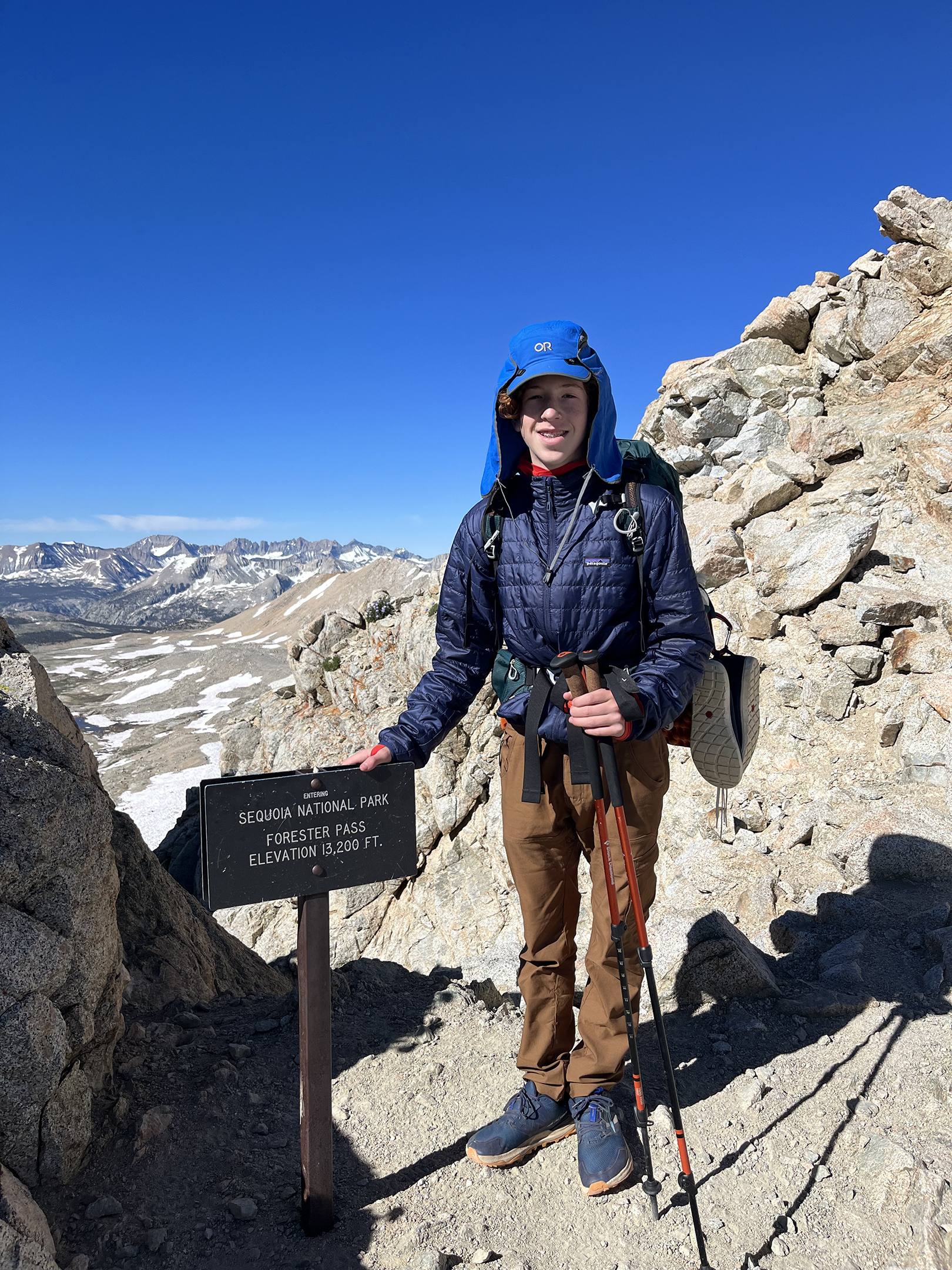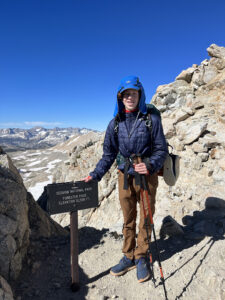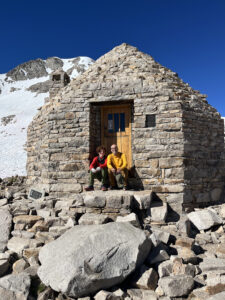
Recent TCS graduate Benny Bierman ‘23, along with his dad, Michael Bierman, hit the trail this summer; a really, really long trail. After spending three weeks hiking the John Muir Trail in California, we caught up with Benny to get his thoughts, insights, and reflections on this incredible adventure.
 Let’s get right to it. What compelled you to hike the 200+-mile John Muir Trail?!
Let’s get right to it. What compelled you to hike the 200+-mile John Muir Trail?!
In Fifth Grade, our teacher Scott McClintock showed the class a documentary called Mile…Mile & a Half. It was about the John Muir Trail (JMT), and that was what first sparked my interest in it. Trails like the Appalachian Trail or the Pacific Crest Trail (PCT) are also bucket list trails, but the JMT is known informally as the “gem of the PCT.” I had never been to Yosemite or even the Sierras so I knew just going there for the first time would be awesome.
What were the most difficult aspects of preparing for the trip?
Honestly, I didn’t do much preparation, I had my first job this summer as a camp counselor at Climb So Ill, and I was also away for six weeks on two different sleep-away camps at the Tremont Institute in the Great Smoky Mountains, both of which included a small amount of backpacking. My dad was the one who did the prep for meals and gear and the travel logistics. I think the hardest part before the trip was the time crunch between my summer activities and the trail.
What was the most difficult part of the hike?
I didn’t have a super hard time with any of the physical aspects, except for the elevation. Coming from St. Louis and going straight to 10,000 feet was hard to deal with for the first few days. I had a few headaches and breathing difficulties, but it got easier as the trip went on. When hiking 200 miles, calories and nutrition are very important. My dad planned our meals and got our calories spot on, but most of our meals were super similar. I got sick of eating the same thing again and again for three weeks, so food fatigue was probably the hardest thing.
How would you say your time at The College School prepared you for the trip?
Well, I have never been uncomfortable being outdoors. I think TCS taught me how to keep positive during hard times. For example, if it was raining, or we were on a particularly hard stretch of trail, I knew how to deal with it. Also, all of the camping experiences starting in First Grade helped.
What would you say was the most memorable moment?
I think the most memorable moment was walking down into Yosemite Valley. I am a competitive rock climber, and that area is a climber’s paradise. I had never been there, so seeing Half Dome and El Capitan was awesome. There were also restaurants in Yosemite. The bacon and eggs were a bonus! I chose the end, but everything on the trail was beautiful and memorable, so it’s hard to come up with just one.
What were you most surprised about once you were on the trail?
I am a pretty strong hiker and backpacker–and I know a few things about it–but I couldn’t believe how much I learned from people on the trail and from experience. From the best ways to cook our food, to different ways to hike that put less stress on your muscles, I learned so much that I didn’t know before. I was also really surprised how few people were on the trail. A lot of people do the JMT every year, but 2023 was the highest recorded snow and that scared a lot of people away. We only saw a few people each day.
 Can you talk about how the logistics work regarding food?
Can you talk about how the logistics work regarding food?
Every single day we had a breakfast, which could be oatmeal or granola. There wasn’t lunch, we just snacked all day on protein cookies, granola bars, Oreos, trail mix, and honey stinger waffles. Every. Single. Day. For dinners, we had a little variety, but it was just the same three meals in a random order. We carried about five to six days of food on our flight there. All food needs to be in a bear canister, and those only hold five to six days of food. My dad mailed food ahead in orange Home Depot buckets to three different places. A guy hiked in our first resupply. It was supposed to be carried by burros but there was too much snow on the trail for them. Five days later we got another resupply at a ranch. We hiked another four days and got our last resupply at Red’s Meadow (they had a small restaurant there). Then we hiked to the end.
I know you’ve backpacked in the Great Smoky Mountains Nat’l Park, How were the Sierra’s different?
First, The Smokies are much lower than the Sierras so the elevation difference was immediately notable. The Smokies are also known for incredible biodiversity and that is because of the climate. The temperatures in the Sierras are very different. Our nights were about 40 degrees. Days were 60s to 70s [degrees]. And we also had to hike through about 10 miles of snow…in August! In the Sierras, there are a lot of areas above the treeline which is one reason you need a bear canister–there are no trees from which to hang your food. At lower elevations, there are long meadows and the trees are mainly huge pines.
What’s your next big outdoor adventure?
I want to hike the Appalachian Trail next. That’s much, much longer, so I might take a gap year between high school and college. That’s a long way off, though, so I’m not sure what my next trip will be.
What advice do you have for outdoor enthusiasts about taking on new adventures?
I think the most important advice I could give to a hiker on the JMT specifically is something we were told by the person who drove us to the trailhead, ”If you are having a hard time, just look up.” For people interested in nature or backpacking at all, I think I would go back to a quote from John Muir. “Between every two pine trees, there is a door leading to a new way of life.” It’s kind of a weird quote, but nature is so interesting and beautiful that it is sort of a new way of life to really be in it, so just explore and be curious.
Thanks, Benny. We can’t wait to hear about your next adventure!

